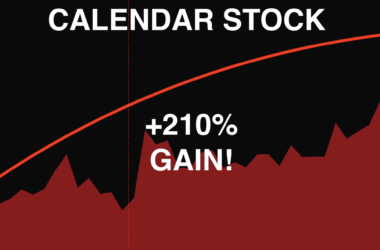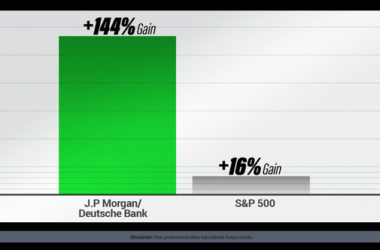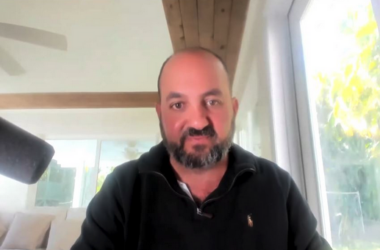Good morning, traders…
Jeff here.
The stock market is often described as bouncing between the two sides of the “fear and greed” spectrum.
When the market is ripping to the upside on low volatility, that’s a sign of overall greed.
When the market is sliding downwards with no bottom in sight, that’s a sign of overall fear.
This phenomenon is reflected in the CNN Fear & Greed Index. And guess where the index is sitting currently…

Various factors are driving this fear amongst traders — impending changes in monetary policy, an upcoming Fed meeting, geopolitical concerns, general election anxiety, and more…
As mentioned yesterday, I expect the fear we’re currently seeing in the markets will continue for the rest of 2024.
Make no mistake, this is a major “regime change” in market sentiment…
There’s been very little fear in the markets for the better part of two years. Traders have been repeatedly conditioned to buy every dip and avoid betting against tech stocks.
Now, as we’re trading through September — the worst month for stocks on a historical basis — trader fear is back … with a vengeance.
But what if I told you that fear in the market isn’t a bad thing? In fact, for disciplined options traders, it’s the best possible setup…
While many less-experienced traders are freezing in the face of fear, unsure of how to navigate this tape, I’m licking my chops at the trading opportunities.
Today, I want to show you how to approach a fearful market like a pro.
Let’s break down how fear affects the stock market, why it leads to volatility, and how smart options traders can use this environment to their advantage…
Understanding Fear in the Market
Fear in the stock market is driven by one thing — uncertainty. There’s nothing traders hate more than the collective “not knowing.”
When traders have no clue what will happen next, they tend to get nervous. And when people get nervous, they sell their stocks quickly to avoid losing money.
This fear-based mentality can create a bearish chain reaction…
As more people sell, stock prices fall, which can cause even more fear, leading to even more selling.
At the same time, other traders might see an opportunity and start buying, trying to scoop up stocks at lower prices.
And that’s when volatility kicks in. Fear is one of the main drivers of high volatility.
A common way to measure volatility is through the VIX, also known as the “fear index.” The VIX measures expected future volatility in the stock market.
When fear is high, the VIX goes up, indicating that traders expect big price swings in the near future.
In general, a VIX below $15 reflects a greedy market, while a VIX above $20 shows fear has entered the tape.
Currently, the VIX is sitting right around $20. And I expect it to surge higher several times before the end of the year.
How Fear Turns into Volatility
Fear spreads quickly in the market, often based on rumors, news headlines, or economic reports.
When something unexpected happens, like a company missing earnings expectations or a major political event, fear kicks in, and traders start reacting.
This reaction is often emotional and not based on careful analysis, which is why it can lead to drastic price swings.
Additionally, when there’s enough fear in the market, even positive catalysts can lead to bearish reactions.
For example, look at what happened following Nvidia Corporation’s (NASDAQ: NVDA) recent earnings report. The company reported a 122% year-over-year increase in revenue, yet the stock still dropped more than 20% following the announcement.
At the same time, some traders might see these dips as buying opportunities. They might believe the company is still solid and the market is overreacting.
These traders start buying shares, which causes the price to bounce back (exactly what we saw in tech stocks on Monday).
But all of these up-and-down moves are presenting a huge opportunity for options traders…
Why Volatility is a Good Thing for Traders
Trading profits are based on the size of the price swings.
So, while fear and volatility can be scary for buy-and-hold investors, they’re actually huge advantages for disciplined options traders.
Here’s why:
Bigger Trading Opportunities
When volatility is high, there are more opportunities for options traders to make profitable moves.
Options traders can profit whether the stock market goes up or down, as long as they are on the right side of the trade.
High volatility means more significant price movements, which can lead to bigger profits if the trade is executed correctly.
Fear-based selling often leads to options prices dropping lower than they should. And you can use this opportunity to buy contracts at lower prices.
But be careful — don’t just buy a call because the stock is down a lot.
Do your homework and only dip-buy stocks that have a history of recovering quickly.
Volatility Crush
What goes up, must come down…
After a period of high volatility, it eventually settles back to the mean, a situation known as “volatility crush.”
This is when the big price swings stop, and the premiums on options contracts get decimated.
This is bad if you’re holding the contracts, but great if you’re looking to enter them…
See what I’m getting at?
If you time your trading correctly, you can scoop up contracts on the cheap after the volatility has been crushed.
To exploit this, pay close attention to the implied volatility (IV) of the contracts you’re trading. Look at charts and see how the IV has changed over time.
Then, wait to buy contracts until the IV has dropped significantly after a period of heightened volatility.
Protection with Puts
During times of fear and uncertainty, options traders can use puts to protect themselves.
If the market falls dramatically, the value of these puts will increase, allowing traders to benefit from the “insurance” provided.
Then, with disciplined timing, you can turn around and sell your puts near the bottom, using those profits to go long as lower levels.
This creates a “double-whammy” effect and makes put contracts an excellent tool for managing risk during periods of high volatility.
In volatile markets, it’s easy to get swept up in fear and make bad decisions.
But if you do your homework, remain disciplined, and avoid trading based on emotion — this chaotic period could be one of the most profitable trading seasons in recent memory.
Happy trading,
Jeff Zananiri
P.S. Speaking of profitable trades…
My proprietary AI-powered GAMMA CODE system has garnered an incredible 90.75% win rate, with the average moves of its “glitch” detections returning a staggering 129.74%!*
If you can spot these glitches in real-time, you could enter these “artificially cheap” trades right after they crash — and before they skyrocket — for gains of 51%, 107%, and even 630% … in less than 24 hours.*
But you can’t see these “glitches” if you don’t sign up — Click here now to access the GAMMA CODE!
*Past performance does not indicate future results




